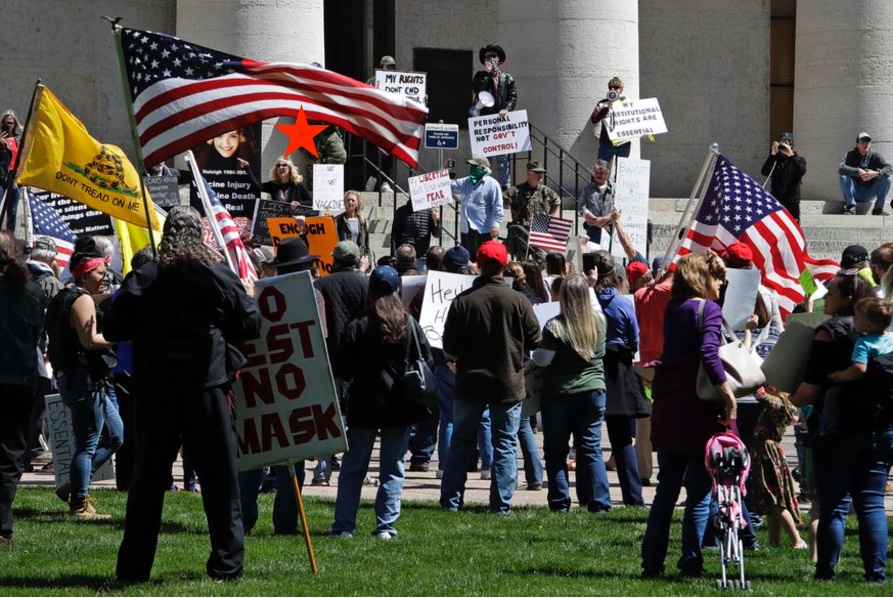Today in #DetectingDeception is ignoring the base rate - a problem we are seeing in the coverage of the #ReopenAmerica protests, particularly in photos and videos. #Thread https://www.newsobserver.com/news/politics-government/article241999131.html">https://www.newsobserver.com/news/poli...
2/ Photos and videos are more compelling when they show emotion, and compelling art engages audiences. But when coverage is limited to the most emotional, the bigger picture can get lost.
3/ Consider this photo taken by the AP at a rally yesterday in Ohio. Looks like a busy protest, right? I’ve marked one of the emotional bits with a star.
4/ Now have a look at this video of the same event. Distance shots show that while there were moments of emotion, the context was not a big event. Context matters. https://fox8.com/news/coronavirus/protesters-chant-freedom-over-safety-outside-ohio-statehouse/">https://fox8.com/news/coro...
5/ Emotion does matter. The strong feels are, in a way the news here. News = things that are different from the norm. And news organizations are being criticized for overblowing the coverage of these events, making them seem more consequential than they are.
6/ But what if the fault is shared. Are you more likely to share the news photo on the left or the one on the right? When people share the more inflammatory images, it assists in skewing the importance of issues.
7/ Even more than that, when social media algorithms decide on what people care about because of what gets shared, people see more of the misleading information. And they think what unpopular views are more acceptable than they are. And they show up the next time.
8/ Share carefully. Because you can become part of the problem.
9/ I& #39;ve added the photo to Spot the Deception. If you want to try other examples, you can find it here: https://drsturgill.wordpress.com/spot-the-deception/">https://drsturgill.wordpress.com/spot-the-...

 Read on Twitter
Read on Twitter



